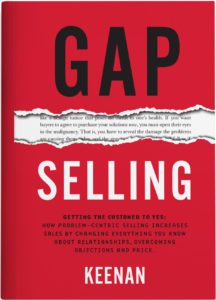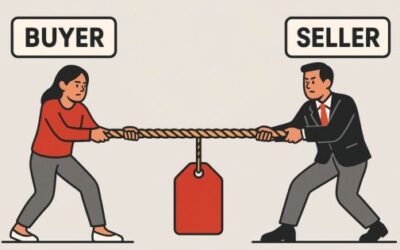There is nothing more frustrating to a sales person than when a client goes dark. Your last conversation was killer, you both agreed that your solution made sense. The prospect said they needed to share it with their team, run the numbers, look at another solution, run it past IT, work with H.R., make a recommendation or any other “next step.” (great video on how to sell the “next step” within a sales cycle)
You’re on it. You move the call to the next stage in the pipeline, you make a note in the CRM and set a new activity. Good shit, the deal is moving along.
Fast forward two weeks. The activity reminder pops up. You call the prospect, no answer. No sweat. You schedule a call for two days later. Two days later, you call again, no answer. You leave another message. K, no worries, it’s all good. You schedule a call for two more days later and in the interim you lob over an email. Two more days pass, no response. Now this shit is getting serious. You think to yourself, something’s wrong. The doubt creeps in, you’re freaked about how to explain it to your manager. You were counting on this deal for the quarter. You’re getting desperate, sending emails and leaving messages saying you’re just “following” up. Ahh shit! You’ve just become that pesky sales person who’s “just following up.” You’re fucked, you’ve lost control of the sale and you’re in desperation mode.
Two things happen when sales people find themselves in desperation mode. One, they almost always lose the deal. They’ve lost control of the sale and it spirals away from them. Two, and even more detrimental, they spend way too much time chasing the deal and it’s never going to close. In an effort to save the deal, the sales person spends valuable selling time chasing a lost prospect.
If a prospect goes dark you have to get them back and the best way to get them back into the fold is to hold them accountable and challenge them.
How to Jump Start a Prospect Gone Dark 
Here’s my favorite phrase to get a prospect jump started again;
“I’m confused, you said you . . . (insert issues prospect said they wanted to fix, their last commitment, the impact of not changing, etc.). Has something changed?”
When a prospect goes dark, the best thing you can do is put it back on the prospect. If they said they liked your solution and need to share it with the team, then you need to call them out on it and ask what happened. When a prospect says “yes,” they want to buy your solution because they are losing 1000’s of dollars in unnecessary expenses and then go dark. You need to parrot that back to them. You need to say:
I’m confused, you said you’re losing thousands of dollars in unnecessary expenses and felt our solution was perfect. We agreed to reconvene two weeks after you spoke with your team and shared it with the CEO. We have not heard from you. Has something changed?
When a prospect goes dark, something is going on behind the scenes. There could be new information, new goals, new solutions, financial set backs, new players, or it could be they are simply busy. Regardless, when a prospect goes dark, the best thing a sales person can do is go back to what their prospect originally said and committed to and hold them accountable to it.
Prospects who go dark aren’t evil or assholes just trying to fuck with you, they are just overwhelmed. There is almost always a real, legitimate reason and it’s your job to figure it out. The best way to get them to respond and figure it out is to hold them accountable to what they said and what they committed to. Anything short of that isn’t selling, it’s pussyfooting around and that’s not gonna get you the sale.
Want Sales Tips Straight to Your Inbox Every Sunday? Join Our Newsletter!
Prospects are people and for the most part, they know they owe you a call. They know they made a commitment and the longer it goes without response, the more they feel bad about it and in an odd twist, the less likely they will be to call. So, it’s your job to lay it at their feet and open the door by simply saying;
I’m confused, you said . . .
This simple phrase invites prospects to explain where they are, and more importantly address the “gap,” the gap between what they said and their actions. As people we hate inconsistencies, gaps and inaccuracies. So, when you say; I’m confused, you said . . . the prospect is compelled to address the gap and this is exactly what you want them to do.
This entire approach rests on the premise you actually have engaged the prospect well enough early in the sales process so you understand what their problem is, why they are looking at your solution, what the next step is, where you are in the sales cycle and what they are doing in between calls. If you can’t answer those questions, nothing can save you. In that case, take the deal out of the pipeline, go get Jill Konrath’s SNAP Selling book and start over, because you’re a sales person in title only.
If you know what the customer’s motivation is, why they are looking to buy, and what the next step is and it’s because they told you, good — make them own it. That’s how you get them out of the black hole.
When prospect goes dark, accountability is the light.
More Resources:







0 Comments